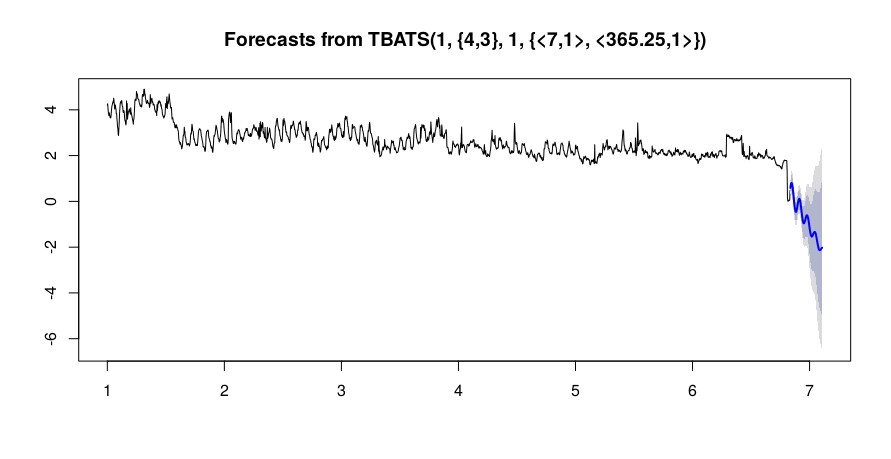I have the following time series:
Data is aviable here data
The time series represent an hourly eletricity load. It starts at 2018-09-13 19:00:00 and end at 2018-12-23 15:00:00.
I want to predict the next 36 hours values.
I tried several method but without success.
This is my code:
load.msts <- msts(df$Power), seasonal.periods = c(7, 365.25))
load.tbats <- tbats(load.msts)
load.pred <- forecast(load.tbats, h = 100)
Then i tried:
load.stlm <- stlm(load.msts, s.window = 'periodic', method = 'ets')
load.pred <- forecast(load.stlm, h = 100)
I have also tried Facebook prophet:
load.prophet.df <-prophet(load.df,yearly.seasonality=TRUE)
load.prophet.model <- make_future_dataframe(load.prophet.df, periods =
200, freq = 3600)
load.prophet.pred <- predict(load.prophet.df, load.prophet.model)
I think that the problem is related to the amount of data. I don't have enough data ( only one year of data).
How can improve my forecasting? Thx












